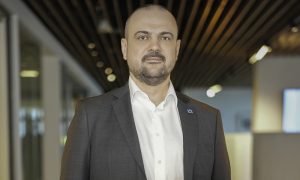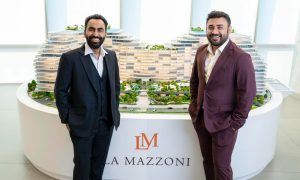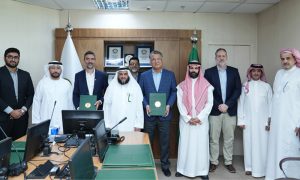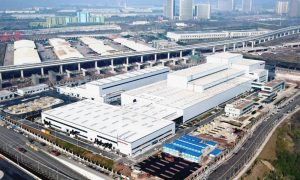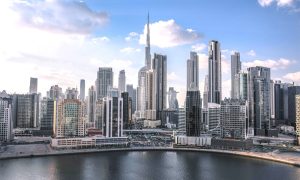Interview: Parsons’ Pierre Santoni on putting infrastructure in focus
Infrastructure development in the UAE and the security challenges asset owners face when using technology

Parsons has been working in the MEA region for over 60 years and has substantial resources in place. The firm’s project portfolio in the region is vast and includes bridges, major highways, rail and transit, airports, ports and water infrastructure. In the UAE, and more specifically Dubai, the firm recently delivered the Dubai Water Canal project, and is now working towards delivering the equally transformational Shindagha Corridor project.
“We are the engineer for the whole corridor on behalf of the RTA,” says Pierre Santoni, senior VP/division manager – Infrastructure & Transport at Parsons. “We designed the $107 million Shindagha Bridge that was recently announced, as well as the entire corridor that begins at the Sana Junction, which we delivered a couple of months ago. The project involves the evaluation of the existing tunnel under the waterway, nearly 10km of a 12-lane expressway, several major interchanges and a number of road improvements.
“There’s a strong emphasis on that project and there are obviously a lot of developments that will rely on this infrastructure project. It was designed and planned over the last two years, with a lot of advanced forecasts of what are going to be the needs of those different communities, and we’re going to implement it in stages, as you’ve seen.”
Asked whether the project poses any unique challenges, given its scale and the fact that it involves heavily used areas of the city, Santoni simply comments, “It’s no different from the challenges we’ve been facing for the last 15 years that I’ve been here, when building very large and ambitions infrastructure programmes in the middle of live traffic. If you look at the Dubai Water Canal, that’s a great showcase of how proper planning, as well as careful and advanced construction methodologies, can mitigate the impact of such large projects. I don’t think anybody was significantly affected by the fact that Sheikh Zayed Road was diverted for nearly two years.
“The project was progressing on an accelerated schedule and we found some innovative methods of building those overhead bridges on a fast-track basis, and we were working closely with the client, the RTA and the contractor. The whole thing was managed by Parsons. It was quite nicely done, and there are learnings that we gained that we’ll apply to the Shindagha Corridor and to other projects. We’ll also look at using new technologies that provide additional benefits and enable us to deliver this project faster.”
Commenting on the state of the industry, Santoni believes things have been far more cohesive and collaborative in the last couple of years.
“There’s increased corporation and the understanding that everybody has to work together to deliver these big projects, to deliver on the vision of the leadership of these countries. Before the global crisis in 2008, everyone was doing their own thing, building and developing at a frenetic pace, without thinking about the environment or considering things around them. That has changed completely now, there’s more thought about sustainability and making the best use of what we have, so we move towards a better future in line with the country’s vision.”
Securing Infrastructure
Technology has become more and more integrated into infrastructure projects in recent years, and while there are significant benefits, this also means nefarious individuals and groups can hijack or shut down these systems. Santoni points out that Parsons pays close attention to this and works with clients to safeguard their assets.
“The question about securing technology used in infrastructure projects is a good one. There has been a realisation over the last 12 to 18 months that infrastructure is at risk, and that protecting it is the mandate of these asset owners. Before, people didn’t realise that there will be a time where things will all be connected and so everything needs protection. As you see, highlighted by some of the issues publicised around the world, the weakest point is not where people always think it is. It’s always a backdoor somewhere.
“In the past, people would say, ‘We have a very secure front,’ but then the attack would come from somewhere else, so it didn’t matter how secure the front was. The ‘front’ is becoming difficult to identify, and that’s where Parsons have a differentiator, because we have very strong cyber security offerings. In the past, we’ve worked on providing very specific solutions to specific customers. We are in a position now where we can integrate all of this. We’re developing critical infrastructure protection tools which will be rolled out in the next few months, and we hope it will answer a lot of these questions. We’re trying to provide an end-to-end solution through our strong offerings.”
Asked whether Parsons works with third parties to develop cyber security solutions or has internal resources, Santoni notes, “We are a cyber security company, so we do it internally. It’s not very well-known in this part of the world, but we do develop solutions internally. We work with a lot of agencies and entities in the United States and provide these services, and it’s definitely not something we outsource.”
He concludes, “We are working very hard to bring these solutions to the region, with some caveats obviously, because some of these solutions are developed for very specific customers. But there is a very concerted effort across the company to come up with cyber security solutions and technology that we can apply to projects everywhere in the world.”






